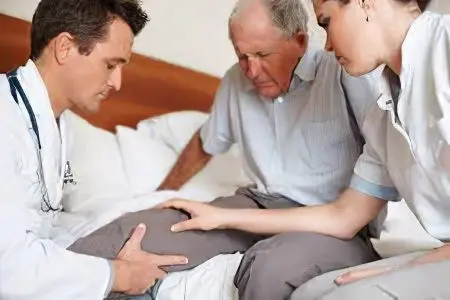
The treatment of stroke patients is a very long and gradual process that must go through a number of successive stages. First, such patients are treated in the intensive care unit, where they are fighting for their lives, then in a neurological hospital, where they are engaged in the restoration of affected cells.
But no less important is the stage of recovery after discharge from the hospital. After all, the neurological deficit that the patient has can no longer be restored by medication, since the brain cells are destroyed.
But you can maximally adapt a person to life at the expense of other neurons that remained unharmed. To achieve this, a lot of time must pass. Naturally, this is possible only thanks to self-recovery after a stroke at home, when both the patient and his relatives are actively interested in this process.
How long does it take to recover after a stroke?
In resolving the issue of the recovery time of the post-stroke period, there can be no unambiguous indicator. It all depends on the size and location of the lesion in the brain, the type of stroke, the time from the onset of the disease to the direct provision of specialized medical care. The greater the value of these indicators, the worse the prognosis for the complete recovery of the patient. You have to work with such people for a very long time, almost for life, if only in order not to aggravate the existing neurological deficit. Indicative dates and forecasts can be represented in the form of such a table.
Type of stroke and its consequences | The duration of the recovery period |
Ischemic stroke with minimal neurological deficit (mild paralysis of the limbs and face, impaired coordination, vision, dizziness) | Partial recovery 1-2 months Full recovery 2-3 months |
Any type of stroke with severe neurological deficit (gross paralysis of the limbs and face, persistent discoordination disorders) | Partial recovery with 6 months self-service option. Full recovery is rare and takes years. |
Severe massive ischemic and hemorrhagic strokes with persistent neurological deficit (disability due to paralysis of one side and other defects) | Partial recovery with the ability to sit independently – 1-2 years; Full recovery is not possible |
From the above table, it becomes obvious that the more severe the stroke, the longer the rehabilitation treatment should be. Patients who have had an ischemic stroke recover slightly faster than after a hemorrhagic one.
With the existing gross neurological deficit against the background of any stroke, it is not always possible to fully restore a person, which is determined by the necrosis of those important clusters of brain neurons, the function of which is unable to be taken over by neighboring healthy cells. Therefore, the recovery period after any stroke never ends. It is necessary to engage in restorative procedures for life according to the type of short-term courses or daily. This will not only help in restoring lost abilities, but also prevent new stroke attacks.
You should never lose heart, no matter what type of stroke is suffered, and despite the obvious predictions. After all, each person has a different life resource, especially in relation to the brain. Only constant self-improvement can help you recover more fully and in the shortest possible time after a stroke.
[Video] Dr. Berg – Post Stroke Rehabilitation. Top 7 things to do!









